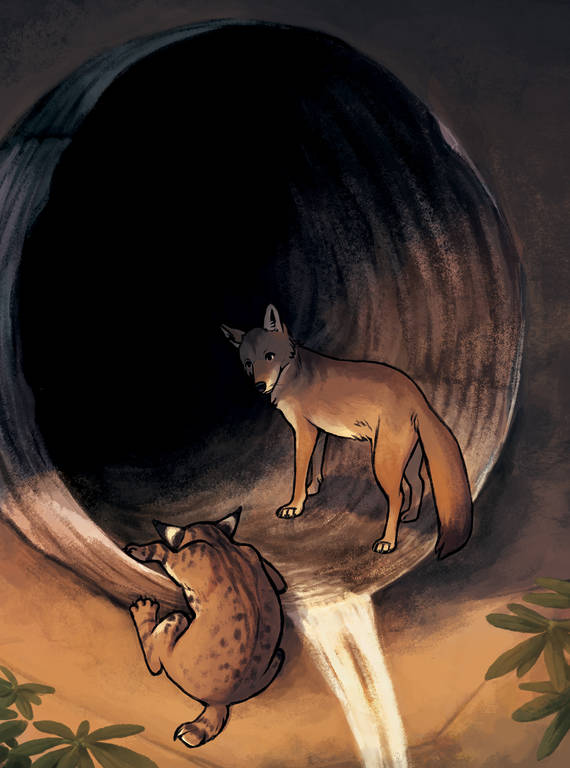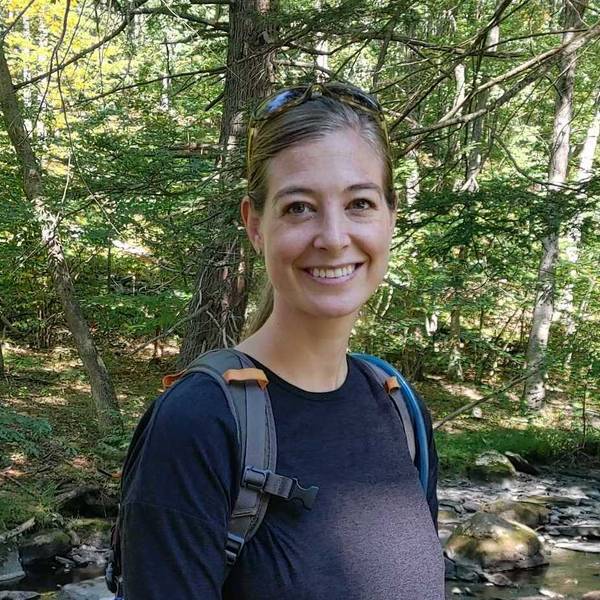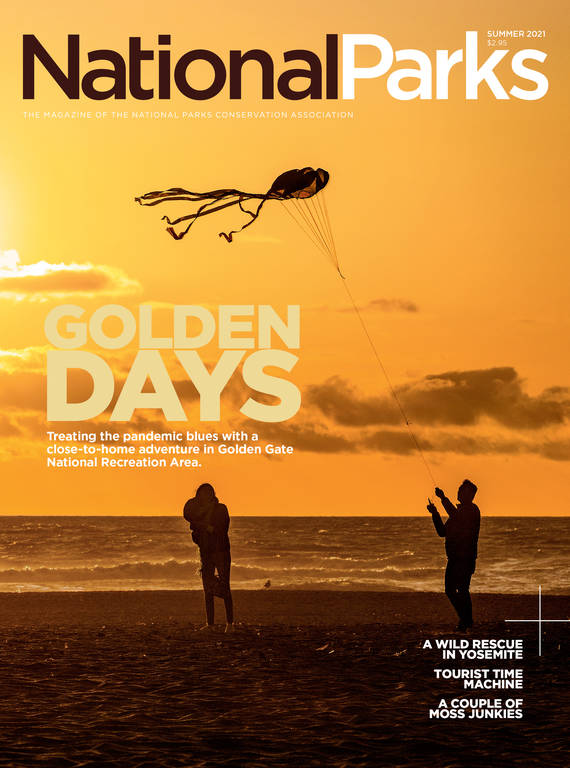Summer 2021
Safe Passages
A new children’s book shows how highways can harm wildlife — and puts a spotlight on a deadly stretch of road near Great Smoky Mountains National Park.

A real-life image of a bobcat using a culvert to bypass I-40 inspired this scene from the book.
© EMMA DUFORT/GREAT SMOKY MOUNTAINS ASSOCIATIONIn the children’s chapter book “A Search for Safe Passage,” author Frances Figart spins a tale of wildlife banding together to cope with the dangers of a human highway that cuts through the mountains where they live. A parade of beautifully illustrated animals, from a poem-reciting firefly to a ponderous turtle, meets new friends, receives guidance from a wise elk and ultimately discovers a natural land bridge that connects the two parts of their historic range.
Figart, creative services director for Great Smoky Mountains Association, said the recently released book, with illustrations by Emma DuFort, is part of an effort to raise awareness about the real-life situation along Interstate 40, a four-lane road that runs through the Pigeon River Gorge near Great Smoky Mountains National Park. Like the fictional highway, I-40 bisects prime habitat, disrupts migration corridors and makes it more difficult for animals traveling out of the park to find mates, food and shelter. Those that do try to cross are often hit and killed, and collisions can be deadly for drivers, too. As the warming climate forces animals to migrate farther and I-40 traffic increases, the problem is only going to get worse, Figart said.
To address this mounting human safety and wildlife conservation crisis, roughly 20 groups and agencies (including NPCA and Great Smoky Mountains Association, the park’s educational partner), formed Safe Passage: The I-40 Pigeon River Gorge Wildlife Crossing Project in 2021. Using data from camera traps and GPS-collared elk, coalition members are in the process of identifying the spots along I-40 where animals are either crossing successfully or dying in high numbers. Jeff Hunter, who is NPCA’s senior program manager in the Southeast region and has been leading the Pigeon River Gorge work since 2017, said installing a wildlife overpass in a location where many collisions occur is the coalition’s “big, hairy, audacious goal.”

National Parks
You can read this and other stories about history, nature, culture, art, conservation, travel, science and more in National Parks magazine. Your tax-deductible membership donation of $25 or more entitles…
See more ›In the meantime, a more immediate opportunity has emerged. If the coalition can raise the capital, the North Carolina Department of Transportation will include wildlife-friendly measures when it replaces a bridged section of I-40 this fall. Hunter said improvements could include a quieter design, the use of cattle guards to prevent hooved animals — such as the area’s growing elk population — from wandering onto nearby on- and off-ramps, and fencing to funnel wildlife under, rather than across, the interstate.
Figart, who traces her interest in wildlife back to her childhood in eastern Kentucky, said she channeled her 11-year-old self while writing the book. She harbors the dream that “A Search for Safe Passage” will land in the laps of budding road ecologists and engineers. “These projects take a lot of time,” Figart said, alluding to the decades of planning and coordination — not to mention wrangling of funding and political support — required for projects such as constructing wildlife overpasses. “I wanted to provide a way for youth to really engage with this problem.” After all, she added, “they’re going to inherit this work.”
Learn more about the effort at smokiessafepassage.org or purchase the book.
About the author
-
 Katherine DeGroff Associate and Online Editor
Katherine DeGroff Associate and Online EditorKatherine is the associate editor of National Parks magazine. Before joining NPCA, Katherine monitored easements at land trusts in Virginia and New Mexico, encouraged bear-aware behavior at Grand Teton National Park, and served as a naturalist for a small environmental education organization in the heart of the Colorado Rockies.



